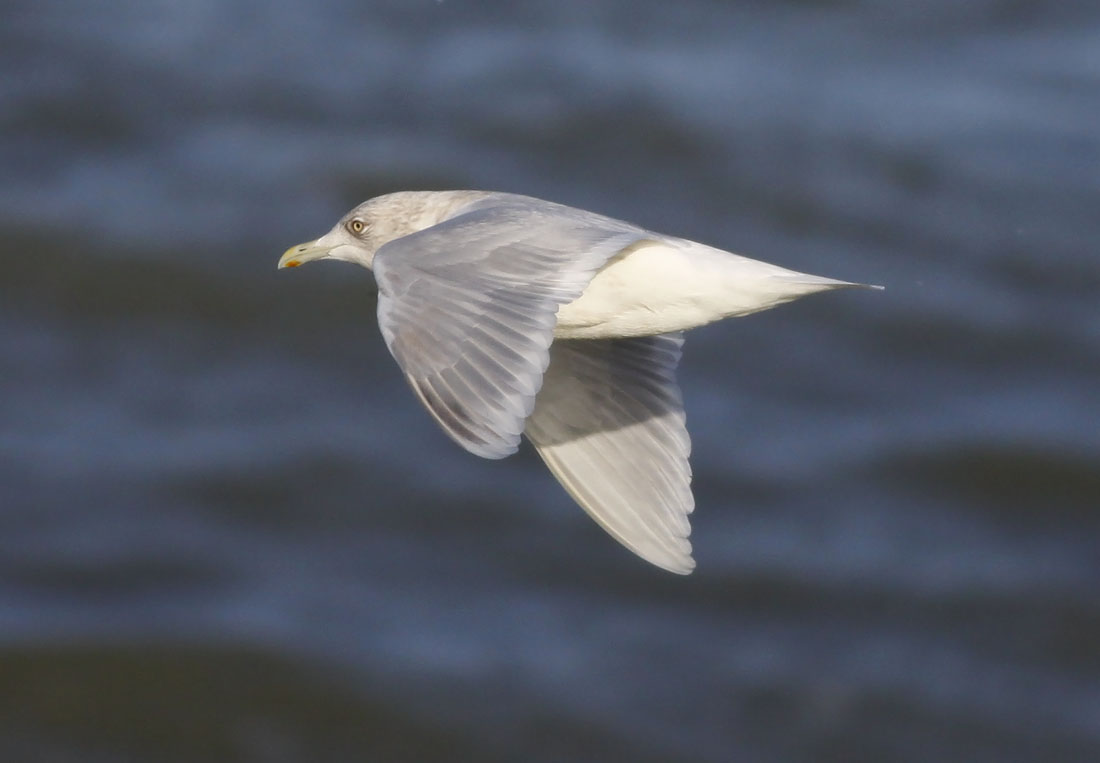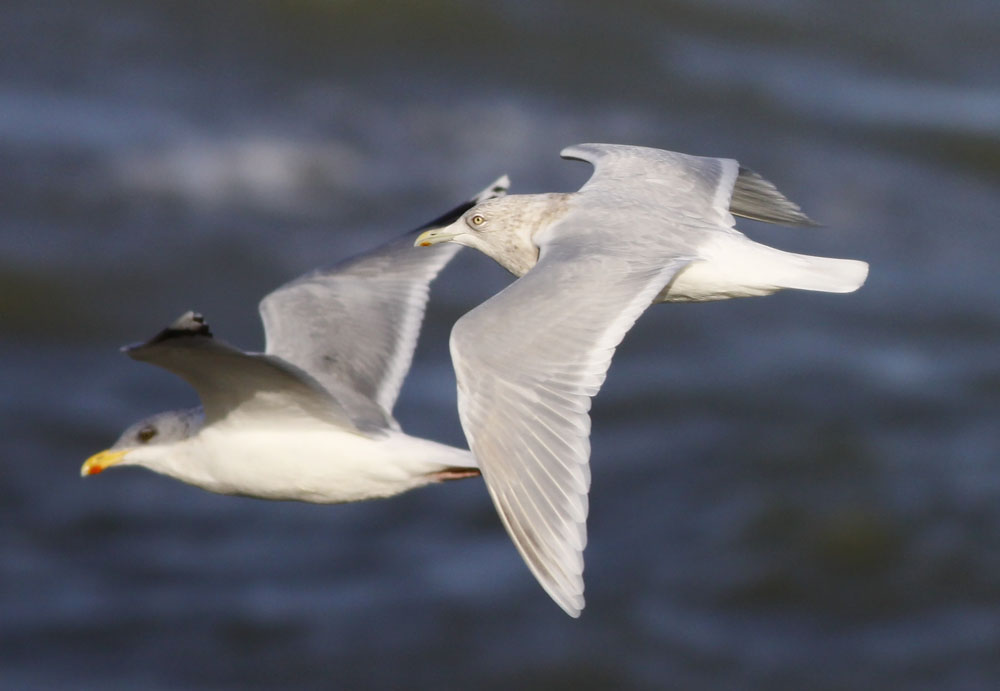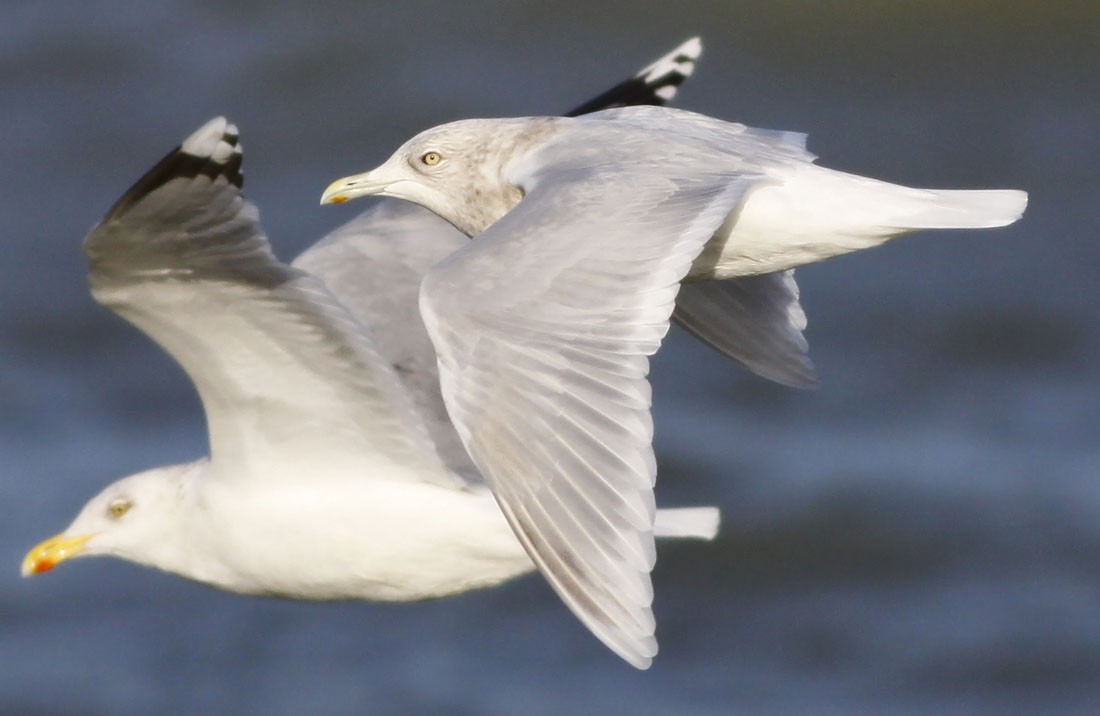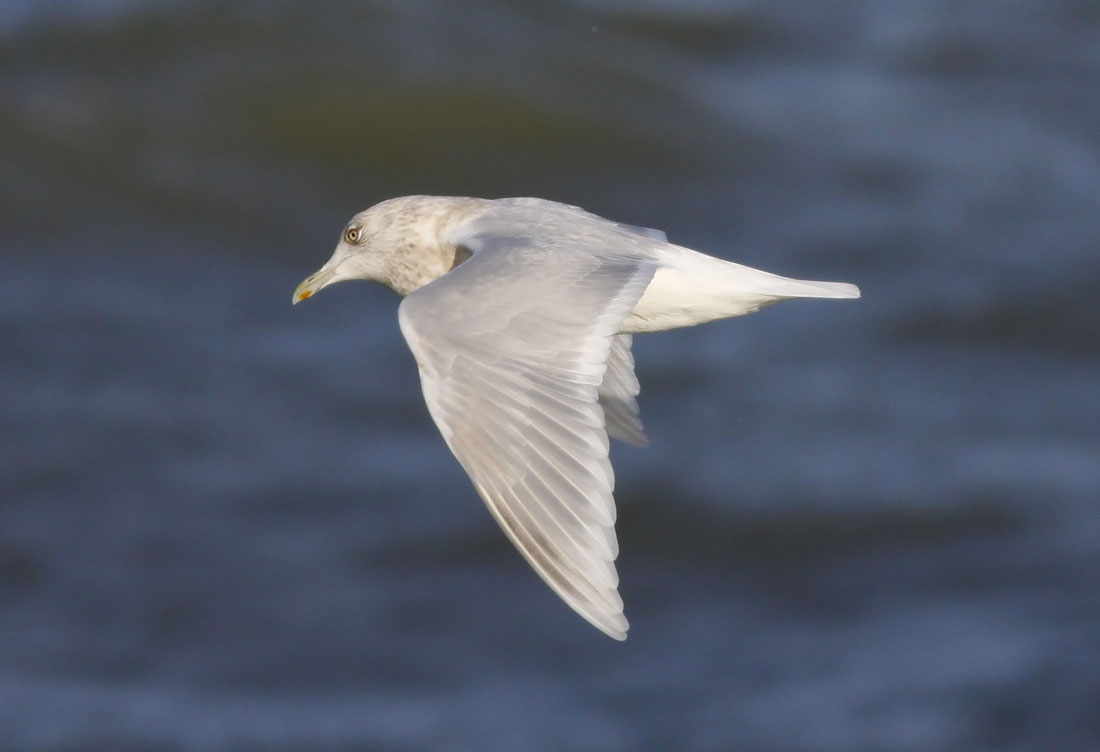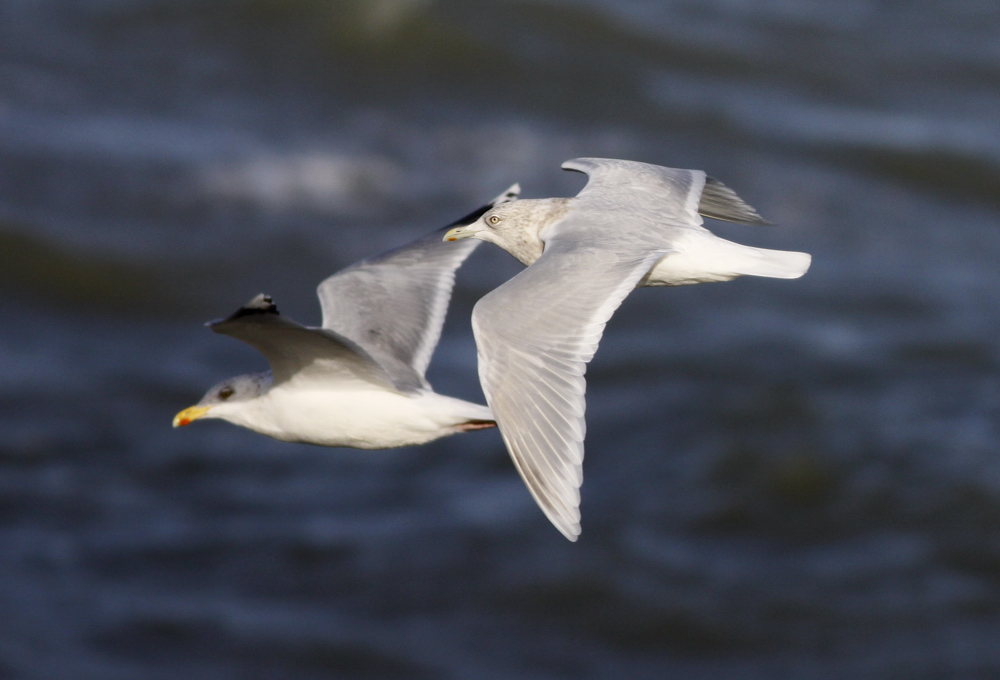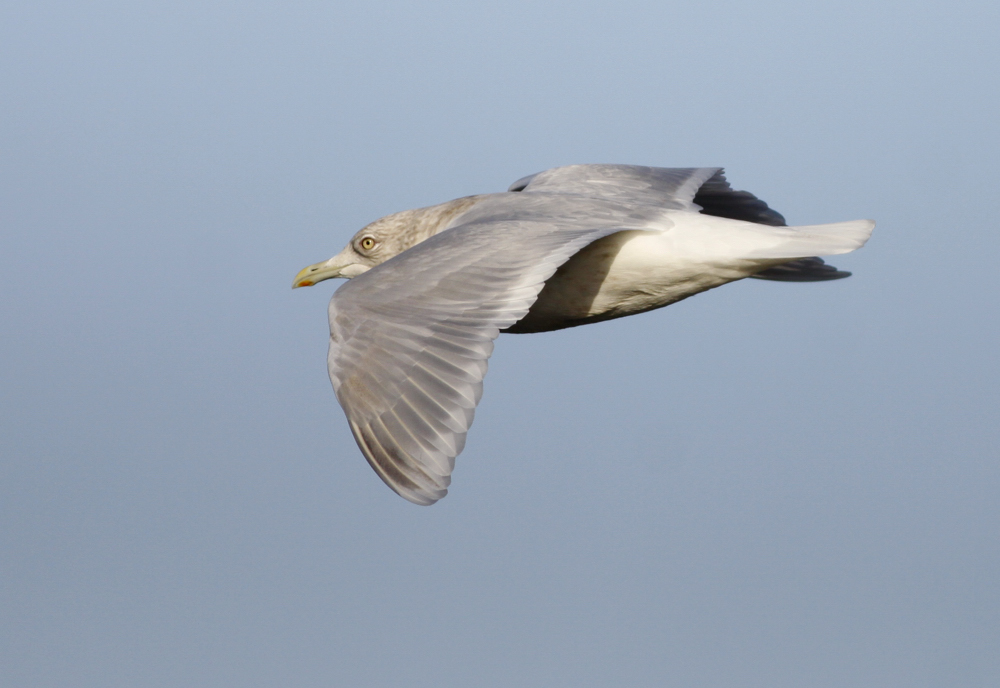 glaucoides - kumlieni
glaucoides - kumlieni
(last update: January 26, 2012)
Iceland / Kumlien's Gull 4cy / 5cy, January 23 2012, Neeltje Jans, the Netherlands. Pictures: Pim Wolf.
Age 4th winter (or advanced 3rd winter): showing clean bill with red spot on lower mandible, faint brown hue on greater primary coverts. Iris clear yellow in this individual. Greyish brown markings on outer primaries, especially visible from above.
Primary category: --
Probably darkest pattern that would still be acceptable for nominate glaucoides? Regarding primary pattern very close to paler end of kumlieni. Especially 3rd winter birds in Iceland may still show dark patterns on the outer primaries, which would normally correspond in tone to the intensity of grey-brown on the centres of the greater primary coverts. this of course are the last signs of immaturity, at locations that can be found in many gull taxa.
However, the pattern on the primaries in the bird below are rather dark and contrasting, and obviously much darker than any vestiges of markings on the primary coverts (there only the slightest hint of buff). Interestingly, the pattern on this bird is not limited to the outer-web, but continues extensively on the inner-web as well (and this may be less often the situatuion in Newfoundland birds). Hence, there is not really a contrast between the two webs; while this is often relevant for kumlieni.
In Newfoundland, Kumlien's Gulls may show adult plumage, except for the outer two to four primaries, which may show a brownish echo of what they might look in full adult plumage. The question remains: Could a nominate Iceland Gull ever show so much brown in P10 and P9 at any age?
Another interesting point for this bird are the white primary shafts. This hard to find on Kumlien's Gulls, where the shafts are grey on most birds (but a small portion may show white shafts, or almost white). The boldness of the these white shafts on this bird is more reminiscent to adult glaucoides. And finally: last point is the striking clear yellow iris. This is something that if it's possible in Kumlien's Gull, is very rare. The vast majority of Newfoundland Kumliens have some spotting and some appear clear but are often a more amber yellow rather than the creamy yellow of this bird.
All in all: it would be extremely interesting to see this bird again next year!
